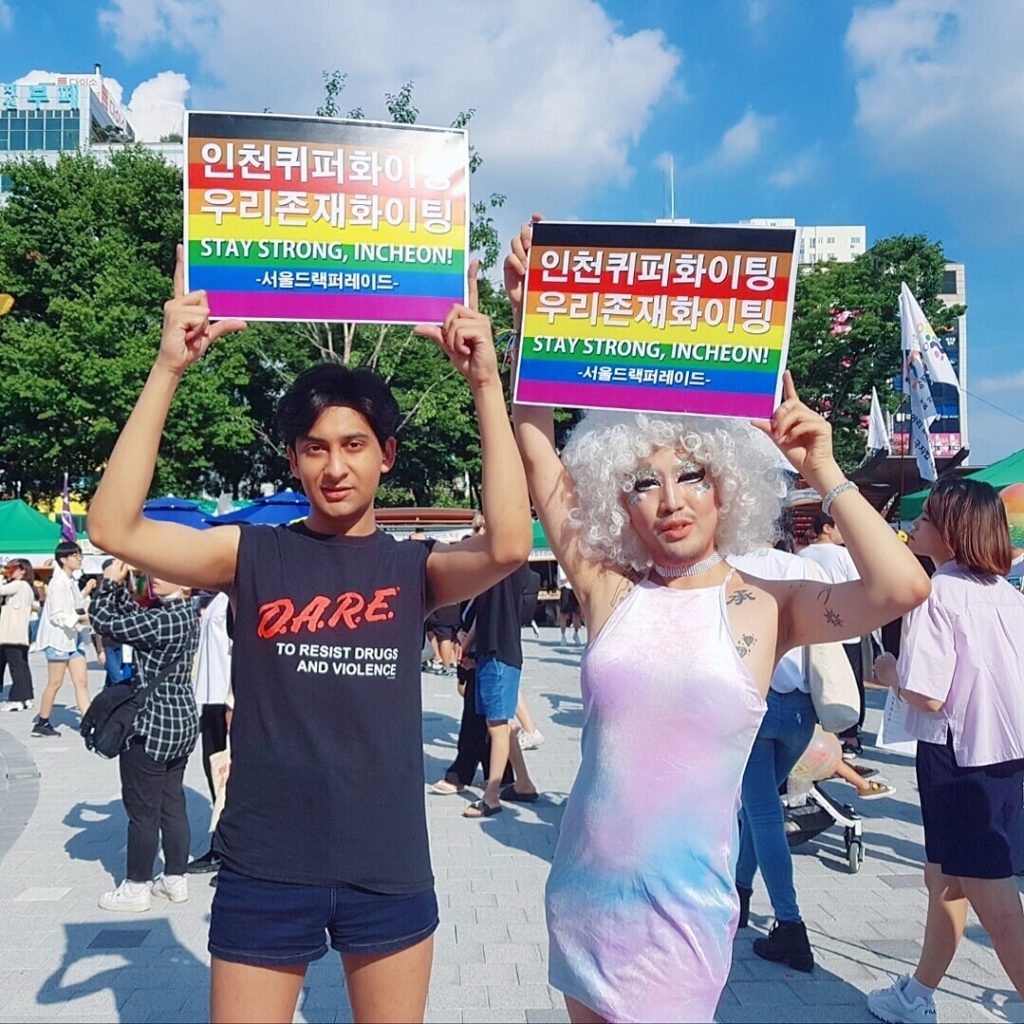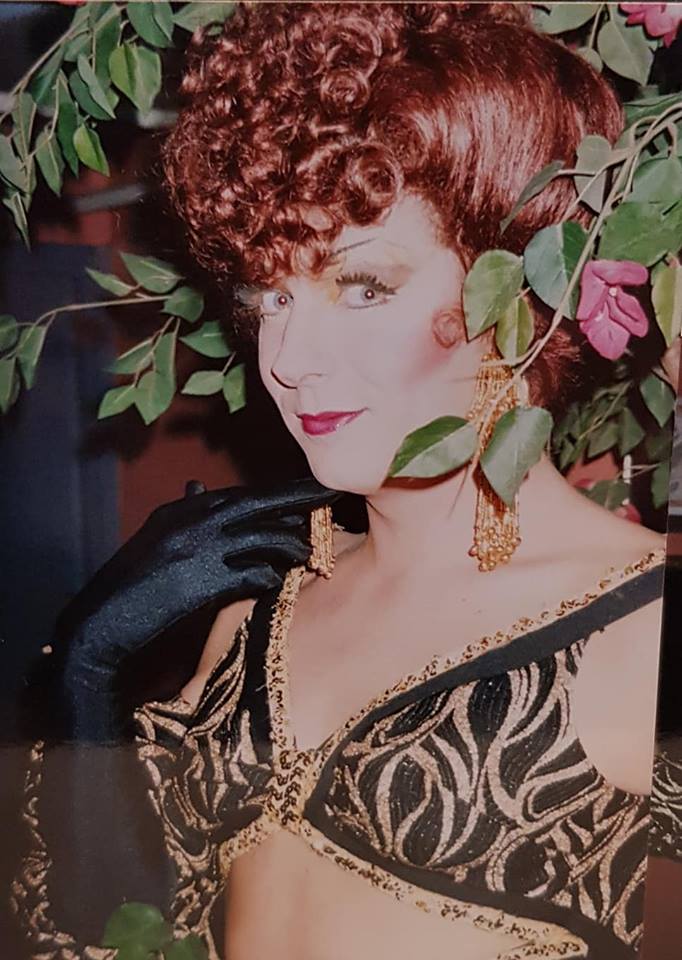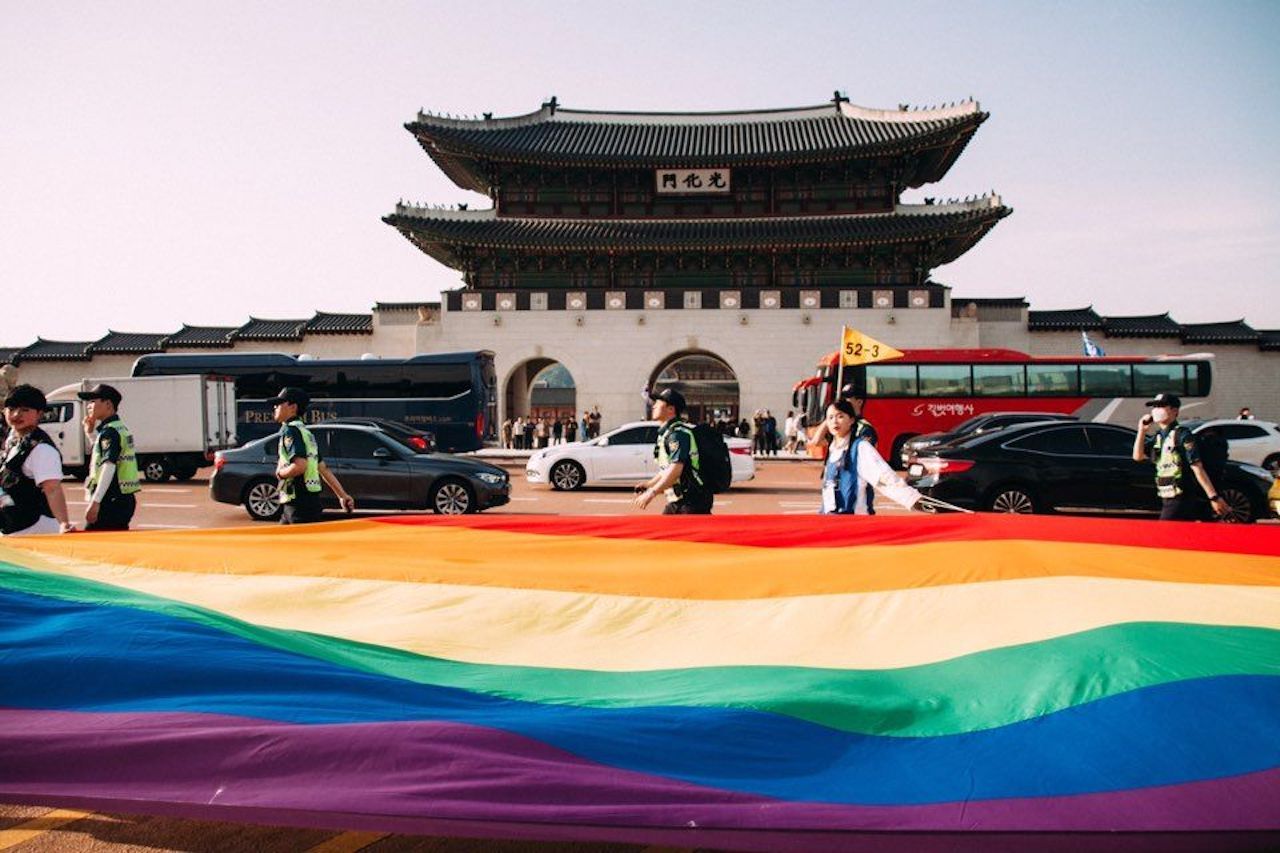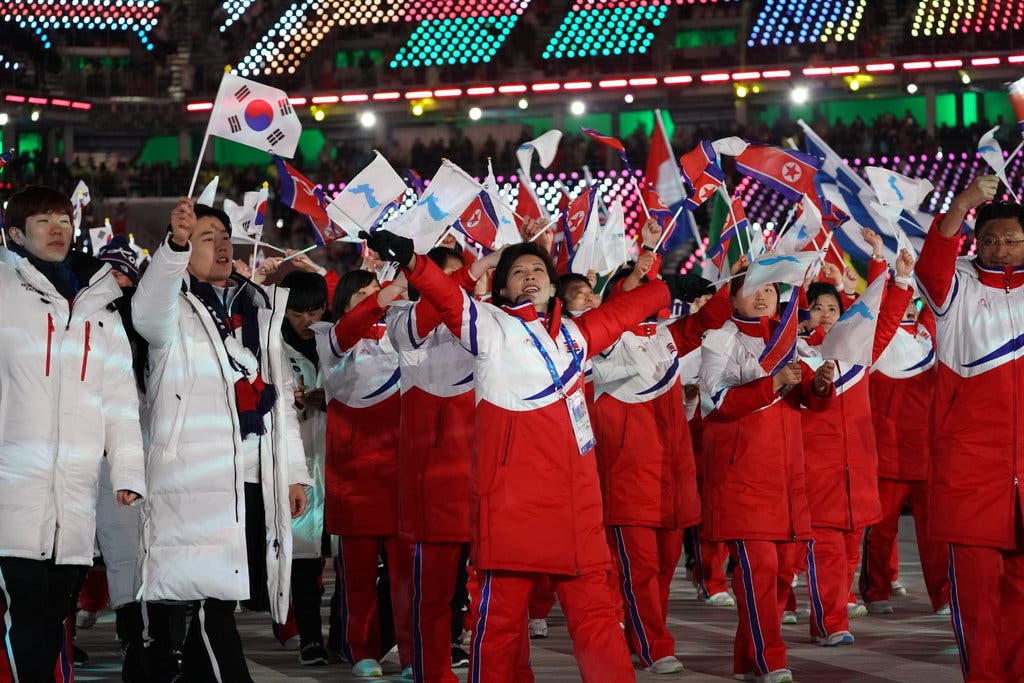Like most people with an online streaming subscription and a proclivity for procrastination, my worldview on drag performance and the LGBT+ community has mostly been shaped by RuPaul’s Drag Race and Pose.
Participating in the 20th edition of the Seoul Pride Parade was an incredible experience. It was particularly interesting to see the involvement of foreigners in the parade, and the acceptance of them by the Korean LGBT+ community. Perhaps this cooperation has contributed to the success of the parade, which went from having 50 people in attendance in the year 2000 to 150,000 people out on the streets of Seoul in 2019.
This made me wonder about the position of foreigners in the LGBT+ community in South Korea. I also set out to explore whether there exists a drag scene here and if so, what makes it unique to Korea? And how are foreigners involved in all this?
So began my journey into the world of drag and it welcomed me with open arms and fierce dance moves.
Being a foreigner in South Korea comes with its own trials and tribulations. In a country where how you look, what you eat and what language you speak defines how likely you are to be accepted, you’d think that it would be hard to become part of any Korean community as a foreigner, even the Korean LGBT+ community.
However, this doesn’t seem to be the case for Vlastimil Jurečka, a currently enrolled Yonsei GSIS student. Even though South Korea isn’t as tolerant as his home country, he has been deeply involved in the LGBT+ community which has been accepting of foreigners in his experience. The influx of English teachers, migrant workers, foreign students, and the U.S. military presence have played a part in the emergence of Itaewon which is not just home to diverse foreign businesses but several that cater to the LGBT+ community.
“I think that’s a unique aspect of the LGBT or drag community in Korea. Many English teachers form a sizeable chunk of the community and are also drag performers. Of course, if you speak Korean, then you can get in on a deeper level,” said Vlastimil. It’s no surprise that this ability to speak Korean impacts the level of acceptance garnered to foreigners in Korea, and it seems that it isn’t limited to any one community.

Vlastimil Jurečka and Korean drag performer Kuciia Diamant, engaged to be married
Vlastimil and Kuciia Diamant, a Korean drag performer, have been dating for almost three years, and are now engaged to be married.
While the civil union is legalized in the Czech Republic, marriage – the same as straight people, is still being debated in parliament. This is still a step ahead of South Korea where even civil unions are yet to be legally recognized. The pride parade in Korea continues to be a march for acceptance and legal recognition, however in a more tolerant society like the Czech Republic, this is a week-long celebration with hundreds of events.
But even with the yearly parade that takes place in several metropolitan cities around Seoul, rural Korea struggles to make sense of a community that is much outside of their norm.
“If you go outside of Seoul then even if you’re holding hands you get looks from the older generation. This doesn’t really happen in the Czech Republic and if it does, people look surprised but definitely not disgusted,” said Vlastimil.

Ali Zahoor and Heezy Yang (Hurricane Kimchi), co-founders of Seoul Drag Parade
Seoul Pride Parade isn’t the only LGBT+ organization that’s making an effort to promote equal rights for the community in Korea. There are several organizations and charities that support the community through performance art.
Ali Zahoor, former student at Yonsei GSIS, and queer British Asian co-founded Seoul Drag Parade along with artist and activist Heezy Yang, also known as drag queen Hurricane Kimchi. Together they’ve helped turn Seoul Drag Parade into the largest drag parade in Asia, an accomplishment that earned them a place on the Forbes 30 Under 30 Asia list in 2018.
But what exactly is a drag parade, and what is drag performance?
A lot of people have misconceptions about what drag is. People might see a man in a dress and high heels and think that he wants to become a woman, but this is far from what drag actually is.
There seems to be a confusion not only in Korea but all over the world regarding the difference between drag performance and transgender people. “There’s a big difference,” Vlastimil argues.
“There’s a pretty big misconception that drag artists are trans or want to be trans but haven’t fully gone through with it. I haven’t met any drag queens that are or are thinking about it. They are comfortable being in their body and being who they are when they are not in drag. They do this as an art form, a performance. Trans people express their identity through their transition not as a performance, but as who they are,” said Vlastimil.
It’s important to keep this distinction in mind because the gender recognition that the trans community fights for is often not taken seriously, which causes internalized hatred and confusion, especially for trans youth. Perhaps this is the reason for a lack of trans Koreans that fully go through with transition, despite the availability of sex reassignment surgery and updation of gender information being legal in Korea.
Ali believes that when it comes to drag, feelings play an important role in self-expression, and it isn’t just limited to stage performance.
“A lot of the drag community is built through the internet. There’s loads of people who do drag but won’t necessarily go out and perform. They’ll do it in their rooms and take pictures. That’s a form of self-expression for them. That often comes out of an act of rebellion. Because Korea is so obsessed with the norm and the status quo. Drag is a way to break that and say ‘I don’t have to dress how you want me to dress.’ Even if it is for this one night, for this one show.”
Korean drag performer Kuciia Diamant believes that drag helped him understand who he is.
“I became confident through it and learned to believe in myself. Now my drag has progressed and has become about helping others learn to do the same and giving them hope.”
“When you look in the mirror and you think that’s pretty cool. It’s different to me but it’s an aspect of me. Drag is like freedom. These performers are doing something they would never get to do otherwise and having people cheer for them, say they’re amazing and beautiful is a really great feeling.” Ali adds.
So why has drag performance taken off in South Korea? Vlastimil pointed out that there is a large number of young drag performers in Korea, as compared to his country where there are few established older performers.
I believe that self-expression and art often emerge out of hardship. Perhaps the growing drag performance in Korea is a result of social intolerance, which is less of an issue in the Czech Republic. The more one is silenced, the more they feel the urgent need to speak out and be heard.
Ali confirmed my theory. “In countries where you can express yourself more comfortably maybe there isn’t such a huge calling for drag. Whereas, Korea still has a strong binary system of how men and women should present themselves. A lot of Korean female drag performers do drag because as women they can dress in a way that they couldn’t otherwise. It’s the same for me. My drag isn’t very feminine at all, but I can’t wear hot pants in the street, can I?”
Vlastimil also added to this. “A lot of drag queens you meet here, express that before they started drag they were a quiet child with not that many friends and through drag, they found confidence and made their friends and drag family. That’s how they came out of their shell and started living their life to the fullest.”
And so I wanted to see it for myself. Watching drag performers on a screen is one thing, but attending one of Seoul Drag Parade’s shows, I learned that it’s not just a performance you’re coming to watch, it’s an entire experience and the audience and performers are in it together.
Everyone sang and danced along, cheering on first-time performers as if they were close friends instead of strangers.
Interestingly, I felt myself gaining confidence and having the courage to sit next to strangers and initiating conversations with them. A first for me. And I was so glad that I did.
A queer Korean woman I met had come to enjoy the show with her American girlfriend.
“I love the diversity. They’re a different category altogether and don’t belong to what’s accepted in the outside world in Korea. I start to feel confident as I get energy from watching them, and I can be myself confidently as a queer person here. I can’t be that outside because I have to protect myself.”
Former Yonsei GSIS student and GSA president Su Liu also performed a song as a part of the show. She mentioned how the space allows for self-expression and one gets to meet “lovely and kind people who are willing to embrace anyone.”
In addition to Su’s performance, a burlesque performance by Nell Fox, founder of White Lies Burlesque, Korea’s leading Burlesque team, goes to show the inclusion of not only foreigners but also atypical performances under the umbrella of drag.

Norway’s self-proclaimed grandmother of drag, Morten Rudå (Tootsie Knutsen)
The highlight of my night was having a chance encounter with founder of Norway’s first drag performance group and self-proclaimed grandmother of drag, Morten Rudå whose stage name was Tootsie Knutsen when he was an active drag performer from 1979 to 2005.
While he was in Korea for a short visit, he made sure to experience drag in Korea. “I was warmly invited by my good friend Hurricane Kimchi to come and enjoy the show,” he said.
“I love to see new drag performers and mentor them to nurture their talents. For me, drag is a way to express things you can’t normally say. Especially through things like comedy or stand-up incorporated into drag. You can get away with saying some things.”
Drag extends beyond just performance and contributes to meaningful causes as well. Seoul Drag Parade organizes shows to raise money for DDingdong, a youth crisis support center for queer Korean youth in need of safe spaces.
Ali expresses that “Drag is open to anyone and everyone. The idea of a cis-gender man dressing as a woman is a very important part of drag, but we want to make sure that’s not the only thing that drag is. We try and have performers who you wouldn’t necessarily think this is a drag queen or a drag king. This is someone who is taking gender and saying ‘whatever’ to it. Through our events we want people to experience drag and the LGBTQ community in Korea. We’re here, we’re queer and we have a lot to offer.”
Things like clothes, makeup and hairstyle boost self-confidence, express who we are and work as an armor against the world. What I’ve come to realize is that drag is exactly that, just multiplied by a thousand or two.
While not all of us might be ready to become drag queens and kings, there is liberation in bending gender norms, societal expectations or simply playing with unconventional forms of self-expression.
These discussions I shared with foreigners and Koreans in the LGBT+ and drag communities in Korea allowed me to see them in a better light, and even gave me a new perspective on my own confidence and self-expression. It just goes to show that learning about the lives of others requires a little dialogue and an open heart.






